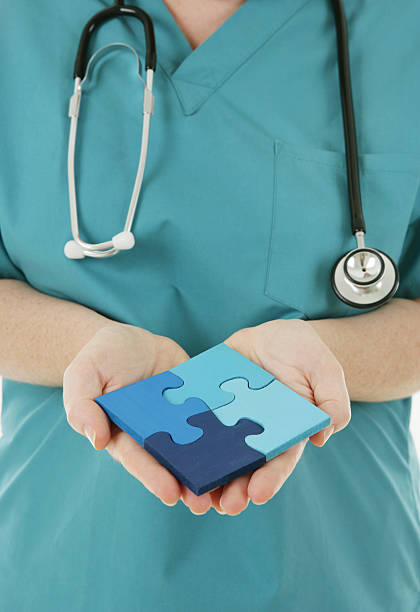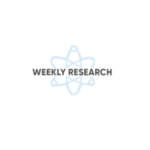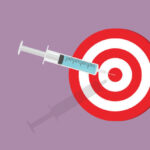Remote Patient Monitoring Challenges in Security
One of the primary concerns in remote patient monitoring is the security of sensitive medical data. With a staggering average of 1426 cyber attacks per week in 2022, protecting patient information from cyber-attacks and data breaches is crucial for maintaining integrity, confidentiality, and HIPAA compliance.
The Solution
Implementing robust security measures protects sensitive medical data and mitigates the risk of cyber threats and data breaches. Ensuring data accuracy through high-quality sensors and proper calibration will lead to more reliable diagnoses and treatment decisions.
For example, Tenovi offers top-notch RPM devices, a dashboard, and API solutions prioritizing patient data protection. Ensuring encrypted data transmission provides peace of mind in the healthcare industry. Additionally, Tenovi consistently releases security patches and updates to maintain the highest level of data security.
Remote Patient Monitoring Challenges in Data Accuracy
Another critical challenge in RPM is ensuring RPM device accuracy and reliability of transmitted medical data. Faulty data can lead to incorrect diagnoses and treatment decisions, potentially harming patients. Several factors, including RPM device sensor quality and calibration, contribute to data accuracy issues.
The Solution
To ensure data accuracy in remote patient monitoring, the following solutions are needed:
- Use high-quality sensors that are accurate and reliable.
- Regularly calibrate sensors to minimize inaccuracies caused by drift or environmental factors.
- Train and educate healthcare professionals and patients on proper usage and data recording.
- Establish robust monitoring and quality control processes to identify and promptly address data accuracy issues.
- Create a feedback loop between healthcare providers, patients, and technology vendors to address concerns and improve accuracy.
- Incorporate user-friendly, out-of-box RPM devices that are portable and convenient.
Remote Patient Monitoring Challenges in Real-time Data Access
Real-time access to patient data is a crucial feature of remote patient monitoring that enables timely intervention and decision-making by qualified healthcare professionals. However, achieving seamless real-time data access poses specific challenges. First is constant connectivity between the sensors and the monitoring platform.
Second, who will review all that data? Physicians want to focus on treating patients. Overburdening medical staff can lead to burnout, while hiring new employees can be expensive.
The Solution
Maintaining a baseline bandwidth and ensuring uninterrupted data transmission through multiple data centers is critical. Using Tenovi cellular-connected RPM devices that connect to the Tenovi Cellular Gateway offers a solution by employing low-power protocols, reducing energy consumption, and enhancing connectivity.
Regarding reviewing patient health data, RPM outsourcing ensures the smoothest transition into remote patient monitoring. Third-party vendors have already trained qualified healthcare professionals who are well-versed in RPM procedures. That way, physicians will only be contacted when the data generated by RPM devices require their medical expertise.
Remote Patient Monitoring Challenges in System Integration
System integration poses a significant hurdle in RPM, mainly when healthcare providers utilize different systems across various networks. Technical challenges arise due to outdated software stacks and compatibility issues. Interoperability is another concern, given health data’s large and heterogeneous nature.
The Solution
System integration challenges can be addressed through standardization efforts and the development of open data exchange protocols. By gradually integrating RPM into existing management and reimbursement systems, patient adoption can be encouraged, and insurance coverage can be expanded.
An API is the easiest method for integrating a new medical module into your digital system. The Tenovi Gateway uses cellular technology to send real-time patient vital sign data to the Tenovi cloud automatically. Tenovi partners can use the Tenovi Remote Patient Monitoring Dashboard or send health data directly to another software platform through our APIs.
Addressing Remote Patient Monitoring Challenges
With Cost
Implementing RPM in the healthcare industry entails various costs, including per-unit costs, licensing fees, software expenses, and the need for dedicated technical staff. Often overlooked is the price of training healthcare professionals to use the new technology effectively.
The Solution
Managing the cost of RPM implementation requires considering long-term benefits and cost savings resulting from improved patient outcomes and optimized resource utilization. Medicare recognizes that RPM yields better health outcomes. Centers for Medicare and Medicaid Services updated CPT 99457 to incentivize more healthcare systems to adopt RPM. This way, it is possible to outsource many RPM services to third-party vendors.
Collaboration and partnerships with RPM vendors can help distribute the financial burdens associated with training and implementation. As a result, healthcare businesses generate a new source of revenue with minimal impact on their existing workflow.
Remote Patient Monitoring Challenges and Solutions
While remote patient monitoring challenges can be overcome by implementing solutions that address security, data accuracy, real-time data access, system integration, and cost management. With improved patient outcomes, reduced costs, and a more efficient healthcare system, RPM will shape the future of healthcare, providing better care and monitoring for patients, regardless of their physical location.
Visit Tenovi to find out who we serve and request a free demo. Meet a better RPM experience for patients, physicians, and your team.






